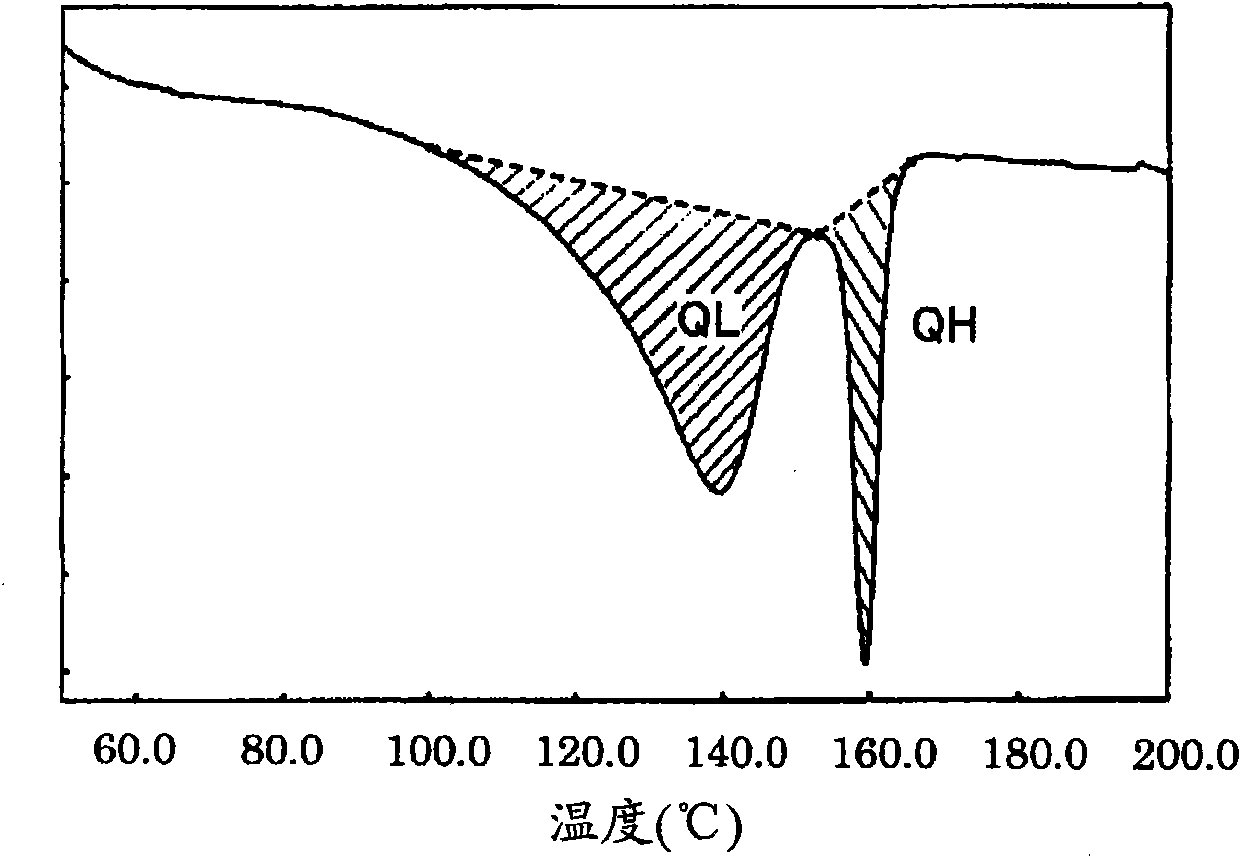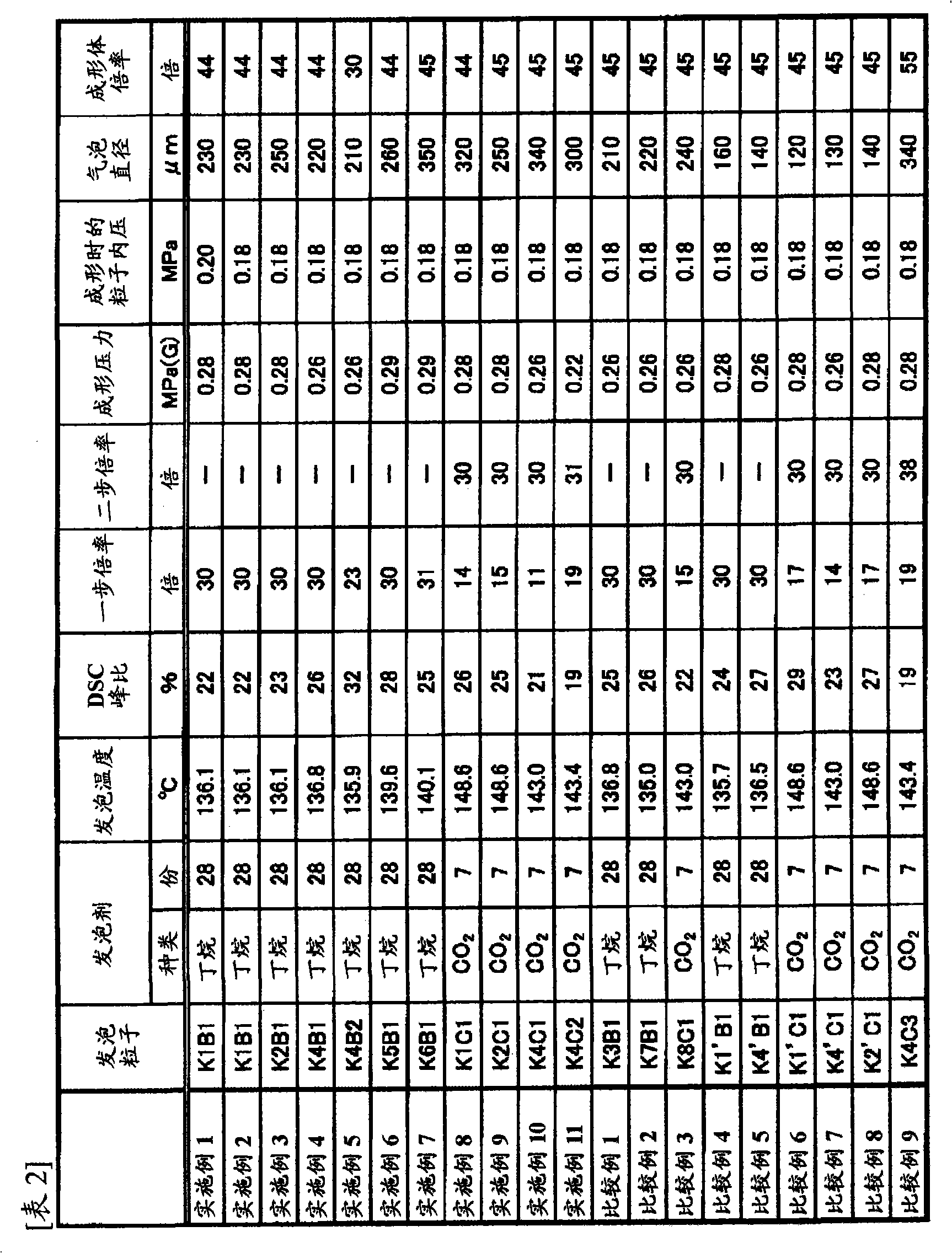Polypropylene resin foamed beads and foam moldings
A foam molding, polypropylene technology, applied in the field of foam molding, can solve the problems of increased aging time, shrinkage of foam molding, obvious tortoise shell pattern, etc., and achieves excellent dimensional stability and good melt adhesion. , the effect of small particle gap
- Summary
- Abstract
- Description
- Claims
- Application Information
AI Technical Summary
Problems solved by technology
Method used
Image
Examples
Embodiment 1
[0098] As a polyocate resin, the ethylene-acrylic random cluster (K1) recorded at the melting point of 141.5 ° C recorded in Table 1 is used to dry the resin with 0.1 as a talc to the talc to foam. The extruder (Osaka Precision Machine Work (strain) manufacturing, type 20VSE-50-28) is made of melting and mixing. Squeeze out the melting resin from a circular mold head in diameter 2mm into strips, then perform water cooling, and then cut it with a granulator to obtain a polypropylene resin that weighs 1.2 mg / grain. particle.
[0099] 100 weights, 300 water weights of polypropylene resin particles, calcium phosphate (manufactured by Taiping Chemical Industry Corporation) 2 weights (manufactured by a Taiping Chemical Industry Company) of the decentralized additives In the 4.5L resistant high -pressure kettle, add 28 weights as a foaming agent at the same time as the mixing. Heat the content of the high -pressure kettle to the foam temperature at 136.1 ° C. Then, after staying f...
Embodiment 2
[0102] A foamed molded body was obtained in the same manner as in Example 1, except that the air pressure in the expanded polypropylene resin particle (K1B1) was set to 0.18 MPa when the expanded polypropylene resin particle (K1B1) was heat-molded. The evaluation results are shown in Table 3.
Embodiment 3
[0104] Except for using the following ethylene-propylene random copolymer (K2) as the polypropylene resin, the polypropylene-based resin expanded particle (K2B1) and its foamed product were obtained in the same manner as in Example 2. The ethylene-propylene random copolymer (K2) used was obtained by using 5 parts by weight of an ethylene-propylene copolymer oligomer (Mv= The resin obtained by 10000) The melting point is 141.5 ° C. The evaluation results are shown in Table 3.
PUM
| Property | Measurement | Unit |
|---|---|---|
| melting point | aaaaa | aaaaa |
| melt viscosity | aaaaa | aaaaa |
| melting point | aaaaa | aaaaa |
Abstract
Description
Claims
Application Information
 Login to View More
Login to View More - R&D
- Intellectual Property
- Life Sciences
- Materials
- Tech Scout
- Unparalleled Data Quality
- Higher Quality Content
- 60% Fewer Hallucinations
Browse by: Latest US Patents, China's latest patents, Technical Efficacy Thesaurus, Application Domain, Technology Topic, Popular Technical Reports.
© 2025 PatSnap. All rights reserved.Legal|Privacy policy|Modern Slavery Act Transparency Statement|Sitemap|About US| Contact US: help@patsnap.com



